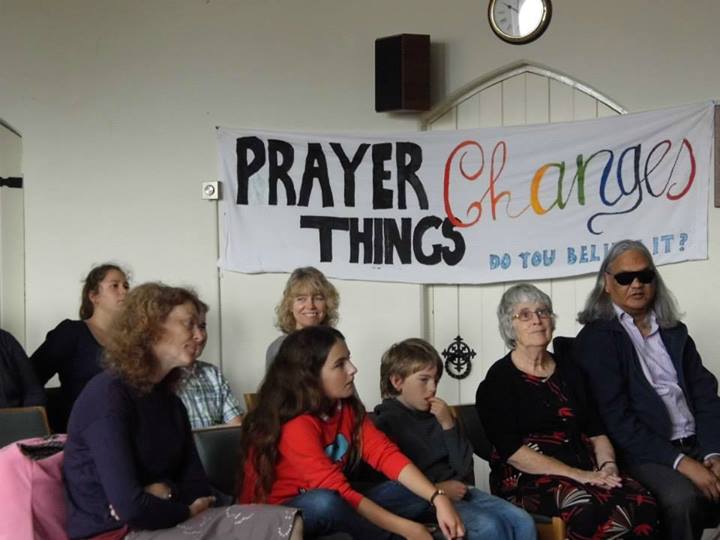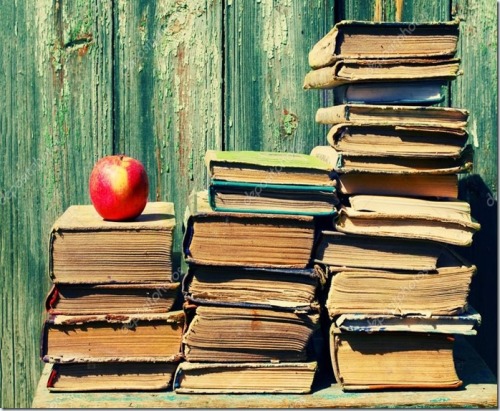England had a Queen Elizabeth queen of England and Ireland, born on Sunday the 7th of September 1533, and, like all the Tudors except Henry VII, at Greenwich Palace, was the only surviving child of Henry VIII by his second queen, Anne Boleyn. With such a mother and with Cranmer as her godfather she represented from her birth the principle of revolt from Rome, but the opponents of that movement attached little importance to her advent into the world. She got the bynames the Virgin Queen and Good Queen Bess,
Although her small kingdom was threatened by grave internal divisions, Elizabeth’s blend of shrewdness, courage, and majestic self-display inspired ardent expressions of loyalty and helped unify the nation against foreign enemies.
Then there was Elizabeth Stuart (1596–1662), consort of Frederick V., elector palatine and titular king of Bohemia, who was the eldest daughter of James I. of Great Britain and of Anne of Denmark, and was born at Falkland Castle in Fifeshire in August 1596. Her brother, the second surviving son of James VI of Scotland and Anne of Denmark was Charles I king of Great Britain and Ireland. In 1620 he took up warmly the cause of his sister the queen of Bohemia, and in 1621 he defended Bacon, using his influence to prevent the chancellor’s degradation from the peerage.
On the 27th of March 1625 Charles I. succeeded to the throne by the death of his father, and on the 1st of May he was married by proxy to Henrietta Maria.
Next we have the Elizabeth who was the UK’s longest-serving monarch and died at Balmoral aged 96, after reigning for 70 years, on Thursday 8, 2022.
The Protestant feelings of the Commons were also aroused by the king’s support of the royal chaplain, Richard Montagu, who had repudiated Calvinistic doctrine. He was a king who managed to rule without parliaments for eleven years, with some success.
He supported zealously William Laud’s rigid Anglican orthodoxy, his compulsory introduction of unwelcome ritual, and his narrow, intolerant and despotic policy, which was marked by several savage prosecutions and sentences in the Star Chamber, drove numbers of moderate Protestants out of the Church into Presbyterianism, and created an intense feeling of hostility to the government throughout the country. Charles I further increased the popular fears on the subject of religion by his welcome given to Panzani, the pope’s agent, in 1634, who endeavoured unsuccessfully to reconcile the two churches, and afterwards to George Conn, papal agent at the court of Henrietta Maria, while the favour shown by the king to these was contrasted with the severe sentences passed upon the Puritans.
He had his war against the Scots and the civil war between Royalists and Parliamentarians. And after a series of Toyalist defeats Charles surrendered to the Scots in May 1646. The Parliamentarians convicted him of treason and got him beheaded.
11 years after his father Charles I was executed Charles II of Great Britain reigned from 1660-85, after the political turmoil had ended.
No event in the history of England had been attended with more lively and general rejoicing than Charles’s restoration, and none was destined to cause greater subsequent disappointment and disillusion. Indolent, sensual and dissipated by nature, Charles’s vices had greatly increased during his exile abroad, and were now, with the great turn of fortune which gave him full opportunity to indulge them, to surpass all the bounds of decency and control. A long residence till the age of thirty abroad, together with his French blood, had made him politically more of a foreigner than an Englishman, and he returned to England ignorant of the English constitution, a Roman Catholic and a secret adversary of the national religion, and untouched by the sentiment of England’s greatness or of patriotism.
 The first period of Charles II.’s reign (1660–1667) was that of the administration of Lord Clarendon, the principal author of the Restoration settlement.
The first period of Charles II.’s reign (1660–1667) was that of the administration of Lord Clarendon, the principal author of the Restoration settlement.
In February 1665 the ill-omened war with Holland was declared, during the progress of which it became apparent how greatly the condition of the national services and the state of administration had deteriorated since the Commonwealth, and to what extent England was isolated and abandoned abroad,
The Dutch War, declared on the 17th of March 1672, though the commercial and naval jealousies of Holland had certainly not disappeared in England, was unpopular because of the alliance with France and the attack upon Protestantism, while the king’s second declaration of indulgence (15th of March 1672) aroused still further antagonism, was declared illegal by the parliament, and was followed up by the Test Act, which obliged James and Clifford to resign their offices. In February 1674 the war with Holland was closed by the treaty of London or of Westminster, though Charles still gave Louis a free hand in his aggressive policy towards the Netherlands, and the Cabal was driven from office. The “Popish Plot,” the creation of a band of impostors encouraged by Shaftesbury and the most violent and unscrupulous of the extreme Protestant party in order to exclude James from the throne, had thrown the whole country into a panic.
In his resistance to the great movement for the exclusion of James from the succession, Charles was aided by moderate men such as Halifax, who desired only a restriction of James’s powers, and still more by the violence of the extreme exclusionists themselves, who headed by Shaftesbury brought about their own downfall and that of their cause by their support of the legitimacy and claims of Charles’s natural son, the duke of Monmouth.
The reign of his predecessor Charles I., and even of that of his successor James II., with their mistaken principles and ideals, have a saving dignity wholly wanting in that of Charles II., and the administration of Cromwell, in spite of the popularity of the restoration, was soon regretted.
“A lazy Prince,”
writes Pepys,
“no Council, no money, no reputation at home or abroad. It is strange how . . . everybody do nowadays reflect upon Oliver and commend him, what brave things he did and made all the neighbour princes fear him; while here a prince, come in with all the love and prayers and good liking of his people . . . hath lost all so soon. . . .”
Charles II had no children by his queen, but his numerous mistresses gave him a large illegitimate progeny.
As the wife of King George VI, Elizabeth Angela Marguerite Bowes-Lyon (4 August 1900 – 30 March 2002) was Queen of the United Kingdom and the Dominions of the British Commonwealth from 11 December 1936 to 6 February 1952. As queen consort, Elizabeth also enjoyed great popularity, enhanced in part by her actions during World War II, when she refused to leave London during German air raids, even after Buckingham Palace was bombed. Many credit her with setting the tone for the modern British monarchy, as she eased formalities and established an unprecedented rapport with the public. She sympathetically was also called the “Queen Mum” and was credited with sustaining the monarchy through numerous crises, including the abdication of Edward VIII and the death of Princess Diana.
On April 21, 1926 Elizabeth Alexandra Mary, the future queen Elizabeth II was born.
Queen Elizabeth II, queen of the United Kingdom of Great Britain and Northern Ireland and of her other realms and territories, head of the Commonwealth of Nations, succeeded her father King George VI on February 6 1952 and witnessed enormous social change.
Like other British sovereigns since Edward VII (reigned 1901-10), she assumed an almost entirely symbolic leadership of the British people. From 1951 she had already begun to represent King George VI, whose health was failing, on various occasions.
To the unveiling of a memorial to Queen Mary (consort of King George V) on June 7, 1967, she invited the Duke and Duchess of Windsor, in an attempt to reunite the royal family for the first time since the former King’s abdication in 1936.
We could see how, here and there, she tried to offer the glue to resolve conflicts and fractures. But her attitude was not always well understood, especially when it came to the domestic problems between her children, with Princess Diana in particular.
It was Lady Diana Frances Spencer daughter of Viscount Althorp (later Earl Spencer), who gave her husband prince Charles two sons, Prince William (1982) who would become next in line after prince Charles, and prince Harry (1984) who is the fifth in the line of succession to the British throne.
The “marriage of the century” was not to last, and Charles and Diana separated in 1992 to be divorced in 1996. She remained highly visible and continued her activities on behalf of numerous charities. A great problem was that the paparazzi could not leave her alone. In 1997 in a chase by sensation reporters, she was killed in a car crash in Paris, along with her companion, Emad Mohamed (Dodi) al-Fayed (1955–97), and their driver. Her death brought on a massive public outpouring of grief.
The car crash seemed for a moment also to create a crash in the monarchy, people not understanding how it could be that a mother and grandmother could stay so apathetic and why it took so much time before the queen appeared to say something good about the beloved princess.

Aberfan in the days immediately after the disaster, showing the extent of the spoil slip
Also in 1966, it was not understood by a lot of Britons why it had taken 8 days before the queen turned up at Aberfan, Wales, where a horrifying coal waste avalanche had killed 144 people, the bulk of them youngsters. The Queen and the Duke of Edinburgh visited Aberfan on 29 October to pay their respects to those who had died. Their visit coincided with the end of the main rescue phase; only one contracting firm remained in the village to continue the last stages of the clear-up.
At the place of the tragic event people could see tears running down the queen’s cheeks when she spoke with the survivors. (This expedition to Aberfan was also included in the web series ‘The Crown’.)
In 1992 the public may not have witnessed her tears, but for Queen Elizabeth that was an annus horribilis.
Strangely enough, that terrible year seemed to have loosened something in her that made her appear softer and more ‘root mother-like’ as the years went by. From then onwards it seems that the popularity of the monarchy, which had nearly reached the bottom of the sea, could rise again.
The celebrations of her Silver, Golden, Diamond, and Platinum Jubilees in 1977, 2002, 2012, and 2022, respectively became remarkable occasions where the British people showed how they wanted to show their connection and love for the royals. Up to Australia, Canada, New Zealand, Papua New Guinea, the Cayman Islands and Gibraltar, as well as in other Commonwealth member-states, like the Gambia, Malaysia, Malta, Pakistan, and Samoa organised also celebrations and showed the four-day Platinum Jubilee Central Weekend from Thursday, 2 June, to Sunday, 5 June, their union with the United Kingdom.
Commemorative stamps and coins were issued by several Commonwealth nations and beacons were lit in every Commonwealth capital for the first time. In many places, trees were planted in the Queen’s honour.
One cannot think of a finer ending than the one offered to this elderly lady who has earned her feathers through thick and thin.
Tributes and messages of congratulations came from leaders all over the world.
Following the platinum jubilee weekend, the Queen released a thank you message in which she said:
When it comes to how to mark seventy years as your Queen, there is no guidebook to follow. It really is a first. But I have been humbled and deeply touched that so many people have taken to the streets to celebrate my platinum jubilee. While I may not have attended every event in person, my heart has been with you all; and I remain committed to serving you to the best of my ability, supported by my family.
At a young age she had already told the public she was willing to serve her country in good and in bad days, as long as she would live; And she did!
On the 8th of September the light went out for her and her oldest son at her bedside took over the role she wanted him and his wife to take.
King Charles III, 73, said the death of his beloved mother was a “moment of great sadness” for him and his family and that her loss would be “deeply felt” around the world.
He also took the chance to both honour “Her Majesty”, “his mommy”. He said
“We mourn profoundly the passing of a cherished sovereign and a much-loved mother.
“I know her loss will be deeply felt throughout the country, the realms and the Commonwealth, and by countless people around the world.”
Now entered a new era, but ,first there would be the coming period of mourning, were he and his family would be
“comforted and sustained by our knowledge of the respect and deep affection in which the Queen was so widely held”.
All the Queen’s children had travelled to Balmoral, near Aberdeen, after doctors placed the Queen under medical supervision. There her grandson and now heir to the throne, Prince William, and his brother, Prince Harry, also gathered. The new king also expressed his love for both Prince Harry and his wife Meghan Markle.
Concerning his mother King Charles he believes she has undertaken now another journey:
“To my darling mama, as you begin your last great journey to join my dear lady. I want simply to say this: ‘Thank you,’”
he said to close his address.
“Your love and devotion to our family and to the family of nations you have served so diligently all these years. May flights of angels sing thee to thy rest.”
She may rest in peace!
+
Find also to read:
- A lifelong passion for horses and a Queen’s Platinum Jubilee
- A resolute woman who served her country for a very long time
- The longest-lived and longest-reigning British monarch is not any-more
- Pump, circumstance, Royalism and paganism
- Royals, mini busses and environment
- 2014 Social contacts
- A busy 2017 #3 Fake, gossip and real news
- 2019 was #4 a Year of much deceit in Belgium and the rest of Europe
- BBC One on Sunday May 29: Never-before-seen footage of Queen Elizabeth II
- The week of February the 16th 2022 by The Telegraph
- Indy 100 briefing of May 18, 2022: Seeing is believing
- The Telegraph’s Weekly view 2022 June 04 – June 10
- The Independent looking at May 26 – June 01
- Indy big Stories for 1 Jun 2022
- Global Headlines looked at the beginning of June 2022 by Bloomberg
- The Independent looking at June 02 – June 08
- Blood soaking the water at democracy’s beachhead
- The Guardian Headlines for 2022 July 11 -July 17
- British MPs did not turn their back on the Prime Minister
+++
Related
- Autumn traditions for 2014 – 6 Bonfire night
- August 19, 1596: Birth of Princess Elizabeth (Stuart) of England, Scotland and Ireland. Part I.
- The Gloves of Charles I?
- 1625 – King Charles I of England marries Catholic princess Henrietta Maria of France and Navarre, at Canterbury.
- March 27, 1625: Accession of Charles I, King of England, Scotland and Ireland
- Charles I in search of friends: government in crisis and the rewards of loyalty, 1640-1644Plots, petitions, prelates and popery: Parliament and the ‘tumults’ of December 164112th May 1641. Scapegoat or Tyrant?Getting Your Dead Body Dug Up Just to Get your Head Chopped OffSitting at Oxford: the convening of Charles I’s ‘Mongrel Parliament’, January 1644Penguin Monarchs: Charles II
- May 25, 1660: King Charles II of England, Scotland and Ireland Arrives at Dover
- May 29, 1630 & 1660: Charles II, King of England, Scotland and Ireland
- May 21, 1662: Marriage of King Charles II and Infanta Catherine de Braganza of Portugal
- Henriette: a Sketch of a Childhood – by Dr Jo Wilkinson
- Elizabeth Bourchier Cromwell, Lady Protectress of England, Scotland and Ireland
- The Life and Times of the Reverend John Livingstone Who Helped to Start the English Civil War
- Charles I Counterfeit Shillings – Connecting the York, Oxford and one of the Tower Types – Gary Oddie
- Off With His Head
- 10 (lesser known) statues of English monarchs in London…7. Three Stuart Kings and a Queen…
- Lost London – The Painted Chamber, Palace of Westminster…
- The First King over the Water
- Lost London – ‘Charles II trampling Cromwell’…
- Britannia Returns!
- A Journey of Escape
- Jane Lane: The Woman who Helped Charles II to Escape19 Portraits of Barbara Villiers; Duchess of Cleveland and mistress to King Charles II
- March 1672: The Declaration of Indulgence
- Would Prince William Have Been Able to Keep His Childhood Promise to Restore Princess Diana’s HRH Title as King?
- Episode 66: Discussing Meghan & Reviewing The Queen (2006)
- The Journey of Queen Elizabeth II
- Britain has lost a royal colossus and the greatest monarch to ever live
- My Queen
- London Bridge is Down
- March 30, 2002: Death of Queen Elizabeth, the Queen Mother
- Review : Counting One’s Blessings
- Happy 96th Birthday to Her Majesty Queen Elizabeth II of the United Kingdom
- Elizabeth II
- Prince Archie & Princess Lilibet? Why Meghan & Harry’s Kids May Have New Titles
- Gone
- The incredible reign of her majesty the Queen
- Queen Elizabeth II: The sweetest, funniest moments from her reign
- Rest In Peace, Elizabeth Windsor
- Queen Elizabeth II’s legacy: A look back at key moments during her historic reign
- Meghan Markle Was Reportedly ‘Not Invited’ to The Queen’s Bedside in Ongoing Royal Rift
- An Unforgettable Day
- Queen Elizabeth II And Independent India: A Journey of ‘Shared History’ and Pending Apology
- When The Queen Was Moved To Tears In Public
- Canada’s Conservatives tweak plans to announce new leader after Queen Elizabeth death
- Queen Elizabeth’s complicated, ‘ambivalent’ relationship with Indigenous Canadians
- Ex-King Gyanendra expresses grief over Queen Elizabeth-II death
- Churchill Museum Adds Exhibit to Honor Queen Elizabeth II
- Nepal to mourn Queen Elizabeth-II demise for three days
- The man who would be king
- King Charles III: I will serve with “loyalty, respect and love”
- King Charles makes William and Kate Prince and Princess of Wales in first speech as monarch
- King Charles Sends ‘Love’ To Harry & Meghan & Remembers ‘Darling Mama’ In 1st Speech
- In Honor of the Queen
- Goodbye to our Queen: a hardy perennial if ever there was one
- King Charles III: Address to the nation in full
- Opinion: King Charles III will struggle to become a unifying figure…























































Pingback: To owe her the most heartfelt debt – Some View on the World
Pingback: A death that brings great sadness to so many | Marcus Ampe's Space
Pingback: Prime Minister Liz Truss’s Tribute to Her Majesty The Queen in the House of Commons. – Some View on the World
Pingback: Will he match and shall the monarchy stand strong – Some View on the World
Pingback: Mourners paying their respects – Some View on the World
Pingback: Some regrettable black spots during funeral procession – Some View on the World